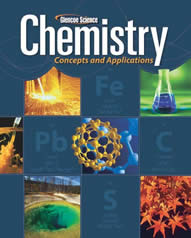1 <a onClick="window.open('/olcweb/cgi/pluginpop.cgi?it=jpg::::/sites/dl/free/0078807239/602907/figure_19_4.jpg','popWin', 'width=NaN,height=NaN,resizable,scrollbars');" href="#"><img valign="absmiddle" height="16" width="16" border="0" src="/olcweb/styles/shared/linkicons/image.gif"> (39.0K)</a> A) addition B) condensation C) cross-linking D) double displacement 2 <a onClick="window.open('/olcweb/cgi/pluginpop.cgi?it=jpg::::/sites/dl/free/0078807239/602907/figure_19_10.jpg','popWin', 'width=NaN,height=NaN,resizable,scrollbars');" href="#"><img valign="absmiddle" height="16" width="16" border="0" src="/olcweb/styles/shared/linkicons/image.gif"> (37.0K)</a> A) monosaccharides B) disaccharides C) polysaccharides D) sucrose 3 <a onClick="window.open('/olcweb/cgi/pluginpop.cgi?it=jpg::::/sites/dl/free/0078807239/602907/figure_19_11.jpg','popWin', 'width=NaN,height=NaN,resizable,scrollbars');" href="#"><img valign="absmiddle" height="16" width="16" border="0" src="/olcweb/styles/shared/linkicons/image.gif"> (44.0K)</a> A) ethyl alcohol B) carbon tetrachloride C) ethene D) water 4 A) oxygen, carbon, hydrogen, and nitrogen B) iron, phosphorus, carbon, and hydrogen C) oxygen, hydrogen, calcium, and carbon D) hydrogen, iron, silicon, and oxygen 5 A) amino acids B) alkenes C) hexoses D) vitamins 6 A) amino acids B) carbon atoms C) monomers D) polypeptides 7 A) glycogen B) starch C) glucose D) sucrose 8 A) bones B) lipids C) sugars D) substrates 9 A) triglycerides B) polypeptides C) polysaccharides D) proteins 10 A) carbohydrates B) lipids C) nucleic acids D) steroids 11 A) genetic code B) RNA C) nucleus D) thymine 12 A) Carbohydrates B) Lipids C) Proteins D) Vitamins 13 A) enzyme B) peptide C) polypeptide D) protein 14 A) addition B) combustion C) condensation D) dehydration 15 A) digestion B) locomotion C) metabolism D) respiration





